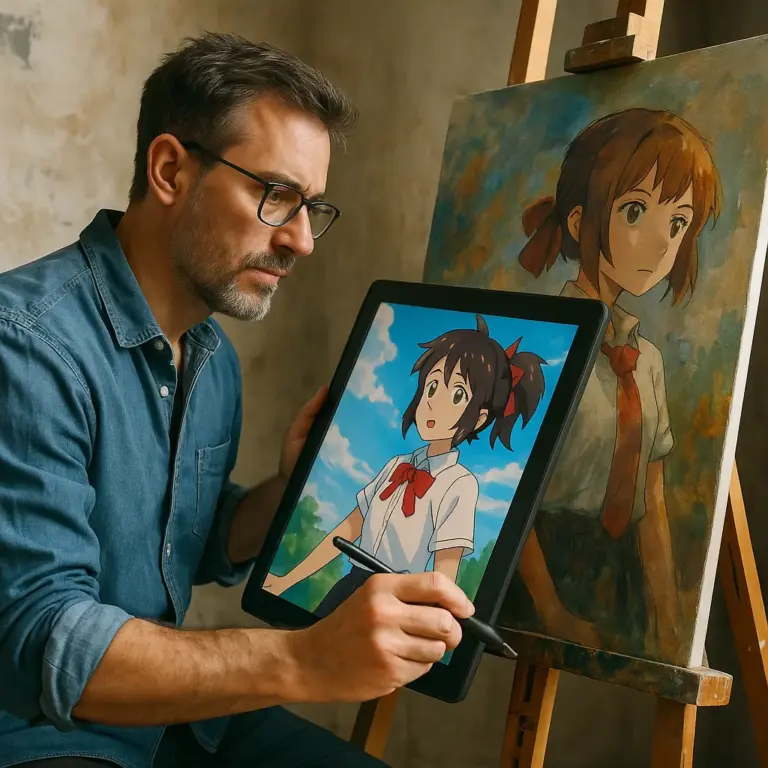Avowed: How Obsidian Reinvented First-Person Fantasy
With the release of Avowed, Obsidian Entertainment not only expands the Pillars of Eternity universe but also redefines how a fantasy RPG can work in first person. The mission was bold: to transform a world traditionally viewed from above — with tactical focus and turn-based combat — into a direct, immersive experience filled with visual impact and a tangible sense of weight with each blow. In this article, we’ll break down how it was done, from animation decisions to the wildest bugs encountered during development.
A New Look at an Old World
Pillars of Eternity won fans with its isometric perspective and rich narrative. Avowed takes that same world in a new direction, adopting a first-person view and betting on closer, more physical, visceral combat. This isn’t entirely new for Obsidian — they’ve worked on titles like Fallout: New Vegas and The Outer Worlds — but this time, the challenge was to convert an entire universe designed for a different style.
Naturally, comparisons to Skyrim were inevitable — the “800-pound gorilla” of the genre, as the devs jokingly call it.
What Makes Avowed’s Combat Stand Out?
The secret lies in the details: hit stops, 60 FPS animations, motion trails, visual impact feedback, and specific reactions based on attack types. According to directors Gabe Paramo (gameplay), Ash Kumar (visual effects), and Seth McCaughey (animation), this combination gave the combat the “weight” it needed to feel memorable.
Key techniques used:
- Hit Stops: Brief pauses at the moment of impact that simulate the force of contact.
- Motion Trails: Subtle trails left by weapons in motion, improving readability of swings.
- 60 FPS Animations: Ensures smoothness and fluidity, even in intense combat.
- Specific Transitions: Striking armored enemies makes weapons “bounce off” rather than slice through.
Together, these elements ensure players feel the difference between swinging in the air and actually landing a hit — something that The Outer Worlds notably lacked.
The Multiplayer That Never Came — But Changed Everything
Avowed was originally planned with co-op in mind. That idea was dropped in 2023, as it disrupted the fluidity of the single-player experience. However, the technical groundwork built for multiplayer — such as syncing first- and third-person perspectives — ended up benefiting the entire combat system.
According to Paramo, using montage slots in Unreal Engine allowed the team to run two animations simultaneously (first- and third-person), ensuring consistency for players who prefer to switch perspectives or are sensitive to FPS movement.
This system also made it easier to create a functional third-person camera — now an essential part of the experience.
Magic and VFX Tailored to the Player
Spells and magical weapons in Avowed aren’t just flashy extras. Since the player is immersed in the scene, everything happens right before their eyes: sparks, electric arcs, fireballs — all designed with visual precision.
Ash Kumar pointed out that instead of treating effects as “background,” each one had to be fine-tuned to avoid overwhelming the screen while maintaining brightness and impact. Visuals also change between first- and third-person views, respecting the player’s perspective. Even blood splatter — yes, even that — was tweaked based on viewing angle.
Animations That React to the Player
Seth McCaughey explained that many animations aren’t linear. When hitting an enemy, a weapon might pass through, get blocked, or even bounce off on impact. Each outcome requires a different animation — adding realism and variety to combat.
Heavier enemies also trigger distinct visual responses. When a weapon strikes tougher foes, it recoils slightly — signaling to the player that a new strategy or stronger force is needed.
Learning From the Players
After the first trailer shown during the Xbox Showcase in January 2023, Obsidian received feedback about how the combat felt. The team used this as a benchmark to tweak movement timing, responsiveness, and visual effects. It became a “north star” for what worked and what didn’t.
This approach isn’t feasible for every studio, but it works well for those using early access or closed betas: letting the audience help fine-tune the final experience.
Hilarious Bugs That Marked Development
Of course, none of this happens without hiccups. The team shared a few hilarious bugs:
- Giant Sword Bug: Enemies randomly wielding weapons three times their size.
- Invisible Weapons Through the Body: Especially in NPCs accused of cowardice.
- “Mouse Door”: Mice with human-level AI opening doors like they were town citizens.
Despite being a challenge, these bugs brought laughter to the team and revealed the complex layers involved in building such a vibrant interactive world.




